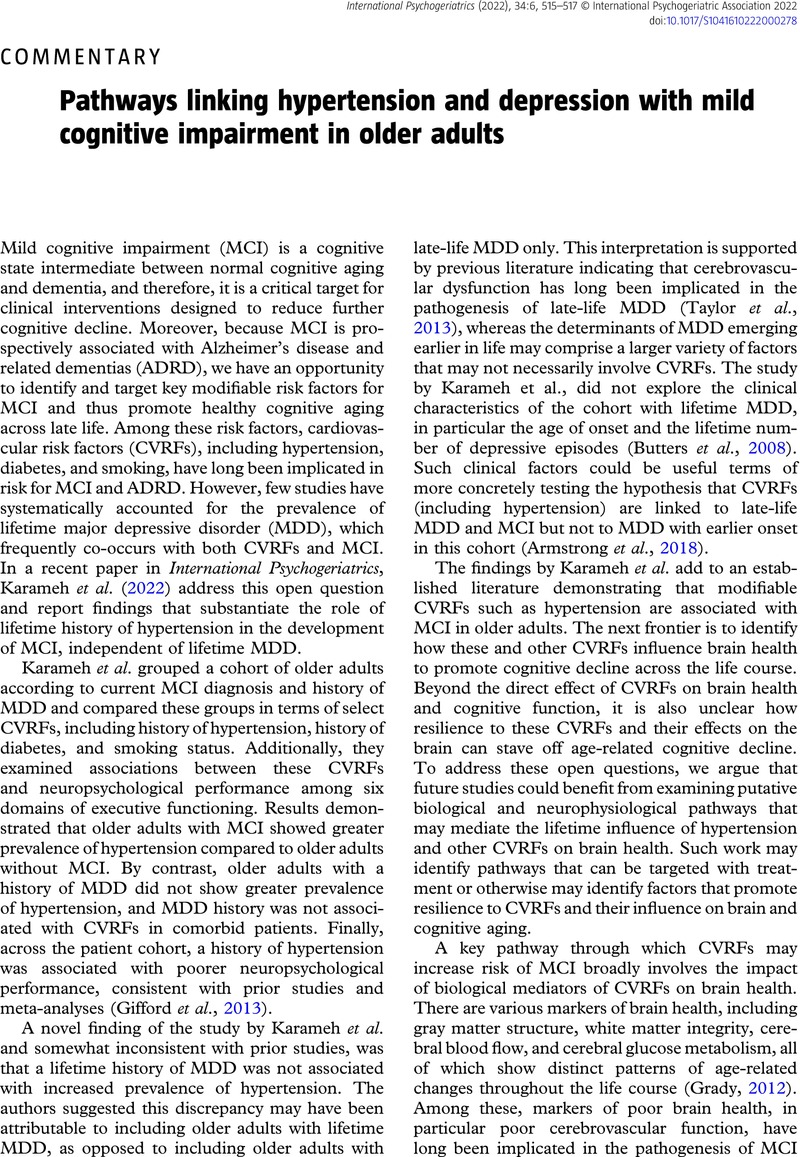Crossref Citations
This article has been cited by the following publications. This list is generated based on data provided by Crossref.
Kong, Linghui
and
Zhang, Huijun
2023.
Latent profile analysis of depression in non-hospitalized elderly patients with hypertension and its influencing factors.
Journal of Affective Disorders,
Vol. 341,
Issue. ,
p.
67.



